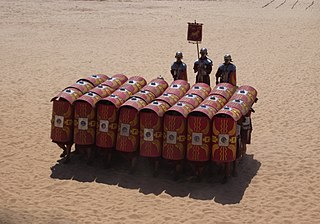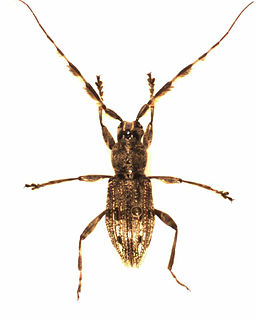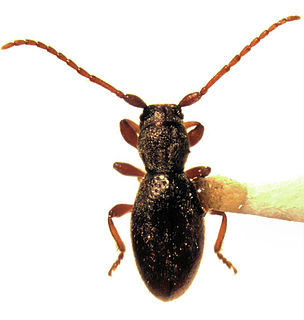Related Research Articles

Tortoises are reptile species of the family Testudinidae of the order Testudines. They are particularly distinguished from other turtles by being exclusively land-dwelling, while many other turtle species are at least partly aquatic. Like other turtles, tortoises have a shell to protect from predation and other threats. The shell in tortoises is generally hard, and like other members of the suborder Cryptodira, they retract their necks and heads directly backwards into the shell to protect them.

The marginated tortoise is a species of tortoise in the family Testudinidae. The species is endemic to Greece, Italy, and the Balkans in Southern Europe. It is the largest European tortoise. The marginated tortoise is herbivorous, and hibernates for the winter.

The Greek tortoise, also known commonly as the spur-thighed tortoise, is a species of tortoise in the family Testudinidae. Testudo graeca is one of five species of Mediterranean tortoises. The other four species are Hermann's tortoise, the Egyptian tortoise, the marginated tortoise, and the Russian tortoise. The Greek tortoise is a very long-lived animal, achieving a lifespan upwards of 125 years, with some unverified reports up to 200 years.

Hermann's tortoise is a species of tortoise. Two subspecies are known: the western Hermann's tortoise and the eastern Hermann's tortoise. Sometimes mentioned as a subspecies, T. h. peleponnesica is not yet confirmed to be genetically different from T. h. boettgeri.

In Ancient Roman warfare, the testudo or tortoise formation was a type of shield wall formation commonly used by the Roman Legions during battles, particularly sieges.

The Russian tortoise, also commonly known as the Afghan tortoise, the Central Asian tortoise, Horsfield's tortoise, four-clawed tortoise, and the (Russian) steppe tortoise, is a threatened species of tortoise in the family Testudinidae. The species is endemic to Central Asia. Human activities in its native habitat contribute to its threatened status.
Testudo may refer to:

The Asian forest tortoise, also known commonly as the Asian brown tortoise, is a species of tortoise in the family Testudinidae. The species is endemic to Southeast Asia. It is believed to be among the most primitive of living tortoises, based on molecular and morphological studies.

Testudo, the Mediterranean tortoises, are a genus of tortoises found in North Africa, Western Asia, and Europe. Several species are under threat in the wild, mainly from habitat destruction.

Aldabrachelys is the recognised genus for the Seychelles and Madagascan radiations of giant tortoises, including the Aldabra giant tortoise.

The Galápagos tortoise complex or Galápagos giant tortoise complex is a species complex of 15 very large tortoise species in the genus Chelonoidis. They are the largest living species of tortoise, with some modern Galápagos tortoises weighing up to 417 kg (919 lb). With lifespans in the wild of over 100 years, they are one of the longest-lived vertebrates. Captive Galapagos tortoises can live up to 177 years. For example, a captive individual, Harriet, lived for at least 175 years. Spanish explorers, who discovered the islands in the 16th century, named them after the Spanish galápago, meaning "tortoise".

Kleinmann's tortoise, also called commonly the Egyptian tortoise, Leith's tortoise, and the Negev tortoise, is a critically endangered species of neck-hiding tortoise in the family Testudinidae. The species is native to Egypt, Libya, and Palestine. The species was once more widespread, but its numbers are now dwindling. The species is nearly extinct in Egypt, and complete extinction in the wild is a looming threat unless more actions are taken to protect this species.

Hesperotestudo is an extinct genus of tortoise that lived from the Miocene to the Pleistocene. Its remains are known from North America, Central America and Bermuda. Further specimens identifiable only to genus have been found in El Salvador.

Parmenini is a tribe of longhorn beetles of the subfamily Lamiinae.

Somatidia is a genus of longhorn beetles of the subfamily Lamiinae, containing the following species:
Somatidia nodularia is a species of beetle in the family Cerambycidae. It was described by Broun in 1913.
Somatidia spinicollis is a species of beetle in the family Cerambycidae. It was described by Broun in 1893.
Somatidia terrestris is a species of beetle in the family Cerambycidae. It was described by Broun in 1880. It contains the varietas Somatidia terrestris var. fuscata.
Somatidia ptinoides is a species of beetle in the family Cerambycidae. It was described by Henry Walter Bates in 1874.

The Chevrolet Testudo is a concept car built by Bertone on a modified Chevrolet Corvair Monza platform. The name comes from the Latin word for "Turtle". The car debuted at the 1963 Geneva Motor Show.
References
- ↑ BioLib.cz - Somatidia testudo. Retrieved on 8 September 2014.